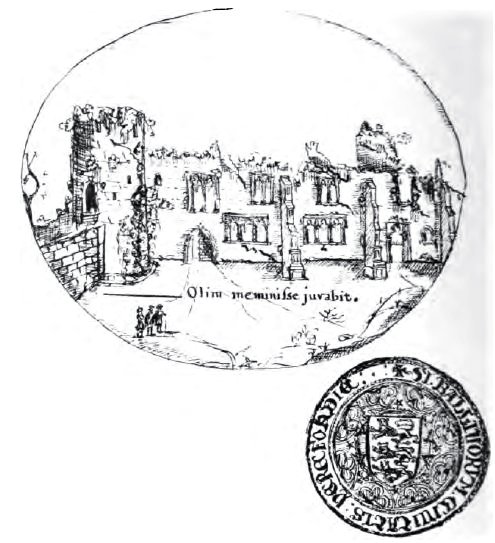Hereford
 Hereford castle was founded before
the Norman Conquest of England in 1066. It was said to have been taken while the
garrison was 'at its meat' after the battle of Hereford
in 1055. This appears to have been a fourteenth century
mistranscription, although the fortress was certainly destroyed.
It
was soon rebuilt and became the caput of Earl William Fitz Osbern
(d.1071) when
he was made earl of Hereford. The castle passed to King William I
in 1075 on the revolt of the Earl William's son, Earl Roger of
Hereford (1071-75). From then on the castle was the power centre of the
sheriffs of Herefordshire, or Hereford in Wales as it was called
throughout the twelfth century.
Hereford castle was founded before
the Norman Conquest of England in 1066. It was said to have been taken while the
garrison was 'at its meat' after the battle of Hereford
in 1055. This appears to have been a fourteenth century
mistranscription, although the fortress was certainly destroyed.
It
was soon rebuilt and became the caput of Earl William Fitz Osbern
(d.1071) when
he was made earl of Hereford. The castle passed to King William I
in 1075 on the revolt of the Earl William's son, Earl Roger of
Hereford (1071-75). From then on the castle was the power centre of the
sheriffs of Herefordshire, or Hereford in Wales as it was called
throughout the twelfth century.In 1138 the castle was captured by rebels and retaken by King Stephen during a particularly brutal struggle when sandbags were made of corpses of monks during the siege. The castle fell again to rebels in 1140 and remained in the rebel hands of the earls of Hereford until 1154 when the castle was surrendered back to the new king, Henry II (1154-89).
As powerful barons of Herefordshire, the Mortimers of Wigmore often found themselves entrusted with the royal castle of Hereford. Roger Mortimer (d.1282) certainly undertook some repairs at the castle for the king, and, during the civil war of 1264, even unsuccesfully attacked the fortress.
The castle was finally demolished at the order of parliament after the Civil War of 1642-46.
Little now remains of Hereford castle, which was thoroughly demolished in the eighteenth century. Part of the moat remains and a single fragment of turret alongside the River Wye. The great motte has long gone, as too has the great keep which once stood upon it.
Copyright©2013
Paul Martin Remfry